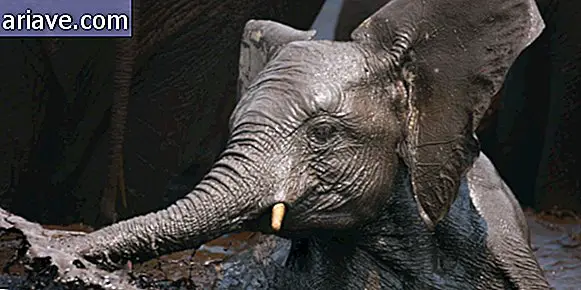How exactly will the sun die - and destroy our planet in the future?
If you enjoy the astronomical stories that we from Mega Curioso post here, then you may have read more than one of them that in the very distant future, when the sun evolves into the red giant phase, our planet will see itself. in serious trouble as he will be completely singed by the star.
However, although we have mentioned the fate that awaits us on several occasions, we never explain the details of this infernal process. The Sun, as you may know, “works” by converting hydrogen atoms into helium. These reactions happen at its core - at a rate of 600 million tons of hydrogen per second!
Slow death
According to Ali Sundermier of Business Insider, one day our star will end up consuming all her hydrogen and when that happens she will start to die. First, as the Sun's nucleus becomes increasingly saturated with helium atoms, nuclear fusion reactions will happen faster - resulting in greater release of energy into space.

In fact, the sun's glare becomes 10 percent more intense for every billion years it spends burning hydrogen, and while that sounds like little, this increase is incredibly dangerous to our planet. Think that within 3.5 billion years our star will become almost 40% brighter than it is today!
It is predicted that as the sun releases more energy, the increase in heat will result in the evaporation of oceans here on Earth. But instead of escaping into space, evaporated water from the oceans will get trapped in the atmosphere, generating an intense greenhouse effect - which will prevent heat from dissipating.

So rising temperatures will further accelerate the process of evaporation - not just in the oceans, but all over the surface and, over time, even in the atmosphere in the form of vapor. The Earth, which today is a blue, life-filled world, will turn into a completely arid, unbearably hot and sterile planet like Venus. And that's not all ...
Inevitable end
Once the sun burns all the hydrogen and begins to consume helium, it will officially enter the red giant phase. When this happens, our star will spend close to 1 billion years burning the helium present in its core and expanding. And as expansion continues, its mass will begin to decrease, resulting in less gravitational force to keep the Solar System planets "anchored" in their orbits.

In this phase of the red giant, our star's atmosphere will extend into orbit around Mars, swallowing Mercury and Venus and roasting the Earth. Only, since the Red Planet will have shifted because of the (now) lesser gravity of the Sun, it may possibly escape being singed.

After the red giant phase, the sun will eventually evolve into the white dwarf phase, so the prediction is that it will become unstable and begin to pulse. The problem is, with each pulse, our star will lose layers of its atmosphere until only a heavy, cold core shrouded in a nebula remains - and it gradually disappears into the immensity of the universe.











